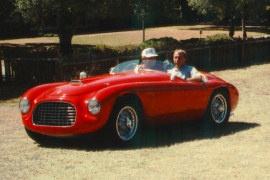FERRARI 166 Sport Models/Series Timeline, Specifications & Photos
First production year: 1948
Engines: Gasoline
Body style: Convertible (spider/spyder, cabrio/cabriolet, drop/open/soft top)
The 166 MM might be one of the most important cars in Ferrari's history since it was the car that put the Italian brand on the motorsports map.
After WWII, most Italian factories suffered from the war's bombings, and cars had to be built by hand. Enzo Ferrari and his team didn't want to stop their dream, and they were ready to start building them. But he had no intention to build affordable vehicles. His dream was to build performance and race cars.
For the 166 MM, Enzo Ferrari chose a Barchetta-type body shape. It featured two small windscreens in front of each occupant. The passenger's one could have been folded down to reduce drag while racing. The low-mounted round headlights and the sculptured hood allowed the driver to see very close in front of the car. With its rounded shape, the 166 MM could cut through the air with fewer turbulences. It featured large wired wheels and a wave-like beltline.
The interior was big enough for two occupants, with a floor-mounted gear-stick. Five dials were installed in the dash-panel center, with a big tachometer on the right and the speedometer on the left. In the middle, in a round chromed rim, there were the amp-meter, fuel-level, and the coolant temperature dials. A small rearview mirror adorned the top of the dash, right between the windscreens.
The 166 MM featured the new 2.0-liter V12 engine with single overhead camshafts and fed by 3 Webber carburetors. It was mated to a 5-speed manual gearbox.
